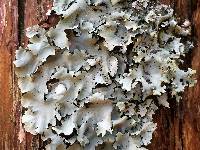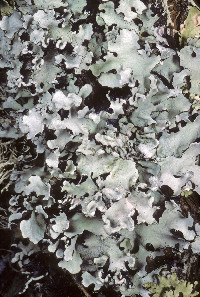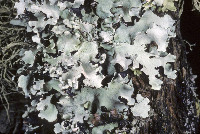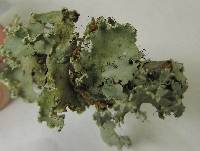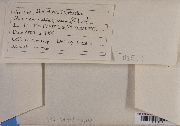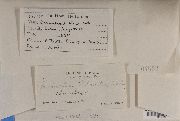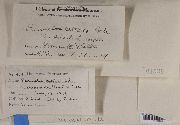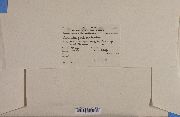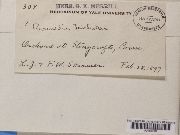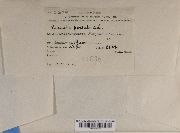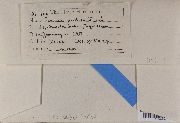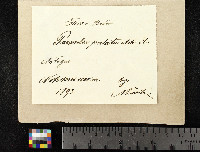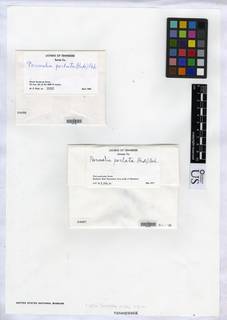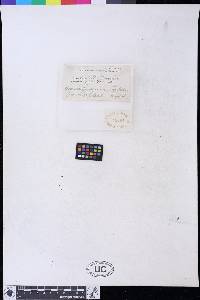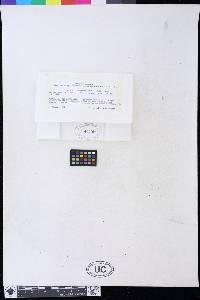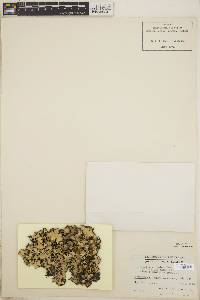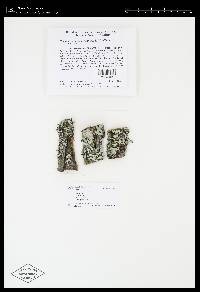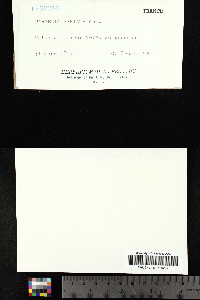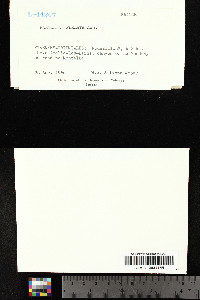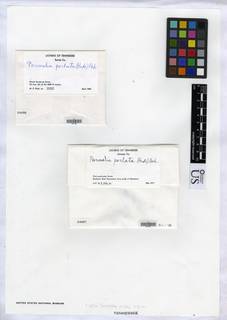
Consortium of Lichen Herbaria
- building a Global Consortium of Bryophytes and Lichens as keystones of cryptobiotic communities -
- Home
- Search
- Images
- Species Checklists
- US States: O-Z >
- US National Parks
- Central America
- South America
- US National Parks
- Southern Subpolar Region
|
|
|
|
Family: Parmeliaceae
Black Stone Flower
[Imbricaria ciliata (DC.) Arnold, moreImbricaria perlata (Huds.) Körb., Imbricaria perlata var. excrescens Arnold, Imbricaria perlata var. perlata (Huds.) Körb., Lichen perlatus Huds., Lobaria perlata (Huds.) Hoffm., Parmelia coniocarpa Laurer, Parmelia perlata (Huds.) Ach., Parmelia perlata f. corallina (Müll.Arg.) Müll.Arg., Parmelia perlata f. perlata (Huds.) Ach., Parmelia perlata f. soralifera Woron. & Pachunoff{?}, Parmelia perlata f. sorediifera Müll.Arg., Parmelia perlata subsp. cetrata (Ach.) Boistel, Parmelia perlata var. ciliata (DC.) Duby, Parmelia perlata var. flavogranulosa Vain., Parmelia perlata var. munda Harm., Parmelia perlata var. perlata (Huds.) Ach., Parmelia perlata var. platyloba Müll.Arg., Parmelia perlata var. rubescens Th. Fr., Parmelia perlata var. sorediata Schaer., Parmelia perlata var. subrevoluta Müll.Arg., Parmelia perlata var. tentaculata Wallr., Parmelia trichotera Hue, Parmelia trichotera f. munda (Harm.) Harm., Parmelia trichotera f. subnuda Erichsen, Parmelia trichotera f. trichotera Hue, Parmelia trichotera var. plombii B. de Lesd., Parmelia trichotera var. subincana Maheu & A. Gillet, Parmelia trichotera var. trichotera Hue, Parmotrema perlatum var. ciliata (DC.) M. Choisy, Parmotrema perlatum var. perlatum (Huds.) M. Choisy, Parmotrema trichotera (Hue) M. Choisy, Platysma perlatum (Huds.) Frege] |
Nash, T.H., Ryan, B.D., Gries, C., Bungartz, F., (eds.) 2002. Lichen Flora of the Greater Sonoran Desert Region. Vol 1. Thallus: foliose, adnate to loosely adnate, 3-20 cm in diam., lobate lobes: subirregular, elongate, often imbricate, plane, separate, 4-15 mm wide; apices: rotund, sometimes deeply crenate, sometimes ascending, elacinate, ciliate; cilia: frequent, up to 2.0 mm long upper surface: gray, sometimes with some blackened areas, smooth, dull to shiny, emaculate to faintly white maculate soredia: granular, common, in linear, marginal to submarginal soralia that often erode large areas and causing the margin to become revoute; isidia and pustulae: absent medulla: white, with continuous algal layer lower surface: black with brown naked zone peripherally, centrally rhizinate; rhizines: scattered, simple, black Apothecia: very rare, substipitate, up to 7 mm in diam.; margin: sparsely sorediate; disc: brown, imperforate ascospores: ellipsoid to broadly ellipsoid, 22-30 x 13-18 µm Pycnidia: not seen Spot tests: upper cortex K+ yellow, C-, KC-, P-; medulla K+ yellow turning orange, C-, KC-, P+ orange Secondary metabolites: upper cortex with atranorin and chloroatranorin; medulla with stictic acid (major) and constictic acid (minor), norstictic, menegazziaic and cryptostictic acids (trace). Substrate and ecology: usually on hardwood trees in open habitats, occasionally on rocks World distribution: widespread in temperate region of the Northern and Southern Hemispheres Sonoran distribution: common on oaks and other trees and shrubs in coastal woodlands of California and Baja California, much rarer inland in Arizona and Sonora. |
|
|
|
Powered by Symbiota




